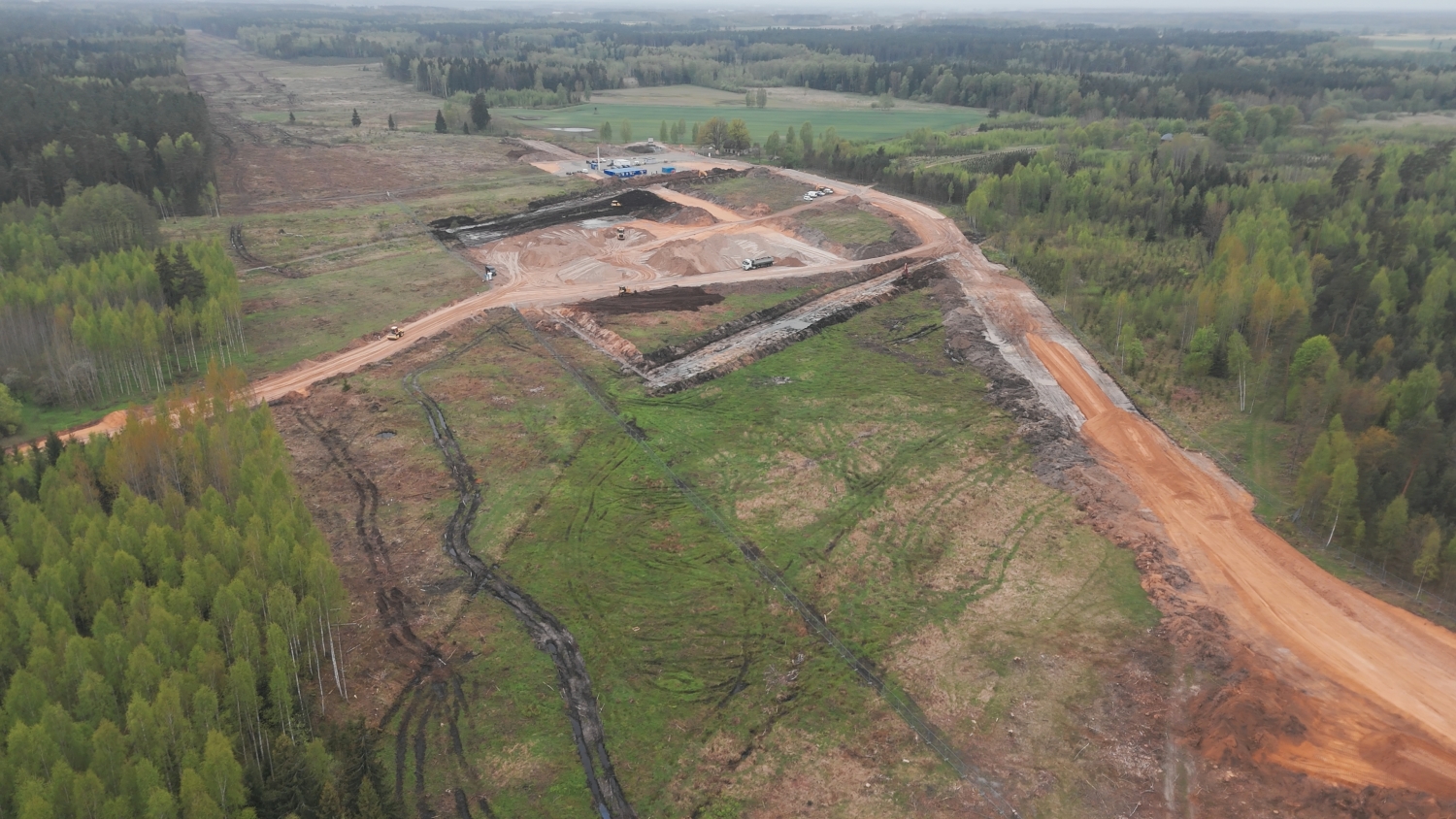Rail Baltica construction is advancing across all three Baltic states.

In southern Latvia, near Iecava, active works are underway, including embankment building, earthworks, and the development of key infrastructure. With major planning phases now complete, Rail Baltica has entered full-scale construction, and the Latvian section is emerging as a vital link in the broader European transport corridor.
Activity has also increased at the nearby Iecava infrastructure maintenance facility, a 16-hectare site that will function as a logistics and operations hub during construction of the southern mainline between Misa and the Lithuanian border. Current work includes building the embankment, constructing access roads, and carrying out earthworks such as topsoil removal, excavation, and layering of the railbed. Preparations are also in progress for the temporary offices of the mainline contractor, JV ERB Rail and 16 modular office units have been delivered and are being outfitted.
“The momentum is clearly building. It is important for us to demonstrate to both the public and the European Commission that we have moved from words to action,” Atis Švinka, Latvia’s Minister of Transport, said.
In recent weeks, work has focused on clearing unexploded ordnance, removing tree stumps, and preparing the substructure. The next phase will involve installing culverts, upgrading drainage systems, and demolishing existing buildings.
Rail Baltica construction in Lithuania is on track to meet its 2025 targets. The amount of railway under construction is set to double, and construction of the region’s longest railway bridge is underway, with columns up to 40 metres high already in place. Work continues on the Kaunas – Latvia section, while planning for the link to Poland is moving forward.
In Estonia, contracts for the mainline have been finalised with two international consortia to build key sections of the railway under the country’s largest infrastructure agreements to date. A separate contract has been signed for the Ülemiste passenger terminal in Tallinn, designed by Zaha Hadid Architects, which will serve as the northern end of the line.
Share on:



